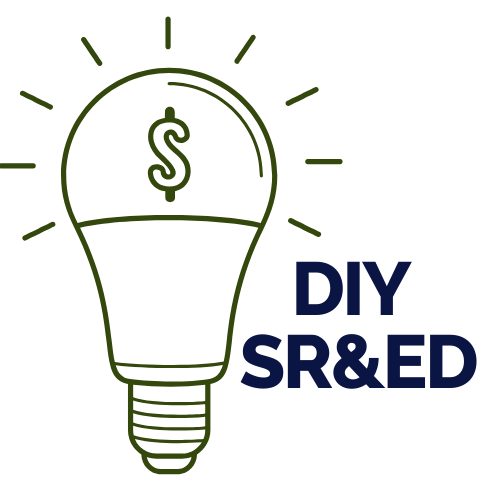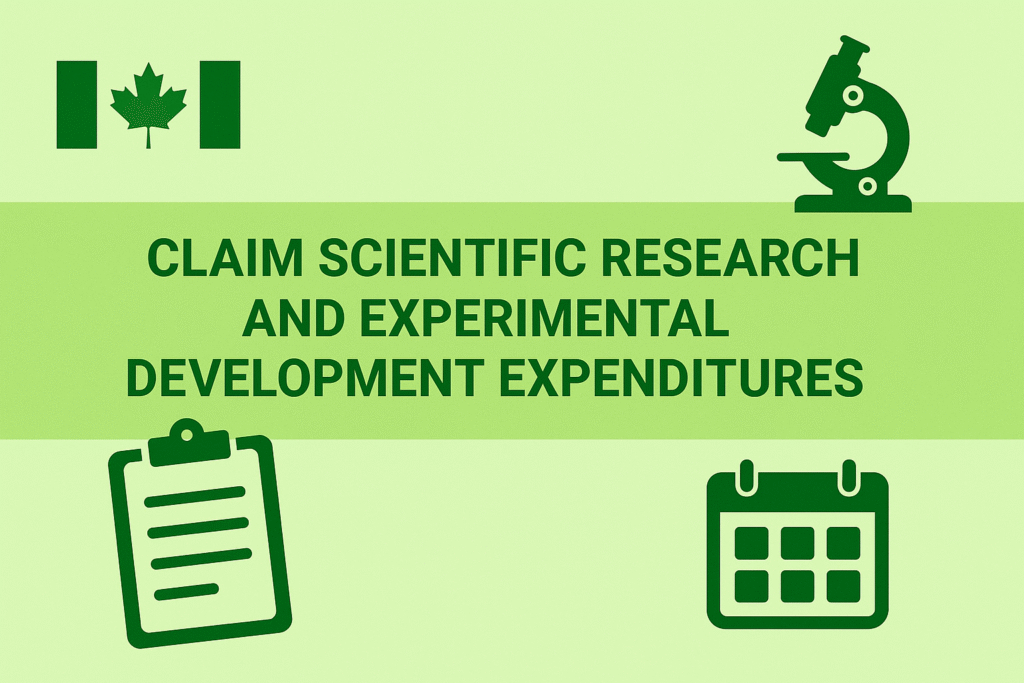If you’re a Canadian founder building new tech, solving technical problems, or launching experimental products, there’s a tax credit with your name on it: the Scientific Research and Experimental Development (SR&ED) program.
Also called “SRED,” this R&D tax credit could mean thousands of dollars back in your pocket. But here’s the catch: most early-stage companies either don’t know about it—or assume it’s too complicated to handle without a pricey consultant.
This guide is here to change that. You’ll learn:
- What the SR&ED program is (and what “SRED” actually means)
- Who qualifies
- How much you could claim
- How to file a claim yourself—with confidence
Understanding the Scientific Research and Experimental Development (SR&ED) Program
SR&ED, short for Scientific Research and Experimental Development, is Canada’s most generous R&D tax incentive. It helps startups and businesses recover costs spent on innovation—like building new tech, refining prototypes, or experimenting with new processes.
Think of it as free money for trying something hard, new, or uncertain in your field.
Many founders are surprised to find their work qualifies. If you’re developing tech that involves experimentation or technical challenges, SR&ED is probably for you.
SR&ED vs. SRED: Same Program, Different Names
Yes, “SR&ED” and “SRED” mean the same thing:
- SR&ED is the formal name used by the Canada Revenue Agency (CRA).
- SRED is the casual term used by startups, founders, and the tech community.
Bottom line: whether you call it SR&ED or SRED, it’s still the same game-changing program.
Want to check if your startup qualifies for SRED?
Get a free SR&ED eligibility assessment now!
What Kind of Work Qualifies for the Scientific Research and Experimental Development?
To qualify, your work typically falls into one of these categories:
- Basic Research – Expanding scientific knowledge without a specific application.
- Applied Research – Advancing knowledge with a practical purpose.
- Experimental Development – Creating or improving tech, products, or processes.
You might also qualify if you’re doing related work like:
- Engineering
- Design & prototyping
- Software development
- Data analysis or testing
Example: Building a new AI-driven image recognition tool for drones? That’s likely SR&ED. Just reskinning your app UI? Not so much.
🔗 Related: Who Qualifies for SR&ED? A Startup-Friendly Break-down


How Much Can You Claim Through SR&ED?
It depends on your business type and province. Here’s a quick look:
Federal SR&ED Tax Credit
- CCPCs (Canadian-Controlled Private Corporations): Up to 35% refundable tax credit on the first $3M of eligible expenses.
- Other corporations/partnerships: 15% non-refundable credit.
💡 Refundable means cash back—even if you didn’t make a profit.
Provincial SR&ED Tax Credits (Additional Savings)
Many provinces offer extra SR&ED credits on top of the federal rate:
Canadian Provincial R&D Tax Credits
| Province | Credit Type | Tax Credit Rate |
|---|---|---|
| Ontario (OITC) | Refundable/non-refundable | 8-20% |
| Quebec (RQ) | Refundable | 14-30% |
| British Columbia | Refundable/non-refundable | 10% |
| Alberta (IEG) | Refundable | 8-20% |
| Manitoba | Refundable/non-refundable | 7.5-100% |
| Saskatchewan | Non-Refundable | 10% |
| Nova Scotia | Refundable | 15% |
| New Brunswick | Refundable | 15% |
| Newfoundland & Labrador | Refundable | 15% |
| Yukon | Refundable | 15-20% |
| Nunavut & NWT & PEI | No additional SR&ED credits | |
📈 Example: A startup in Ontario spending $100,000 on R&D salaries could get back over $65,000 in combined credits.
Eligible vs. Non-eligible type of work for SR&ED
What type of work is Eligible for SR&ED?
To qualify, your work must meet two key criteria:
1. The “Why” Requirement – Is There Scientific or Technological Uncertainty?
Your project must attempt to resolve an uncertainty in science or technology.
Example: If it’s unclear whether a process can be improved using existing knowledge, your R&D work may qualify.
2. The “How” Requirement – Is There a Systematic Investigation?
Your R&D must involve hypothesis-driven experimentation and analysis, not just trial-and-error.
Example: Testing different software algorithms to improve real-time image processing in drones would meet this requirement.
What Type of Work Doesn’t Qualify for SR&ED? (Common Mistakes)
Avoid wasting time claiming ineligible activities. The following don’t qualify:
🚫 Market research or surveys
🚫 Customer feedback
🚫 Regular testing or QA
🚫 UI/UX or visual updates
🚫 Business process improvements (unless tech innovation is involved)
✅ Qualifies: Solving a machine learning challenge with new algorithms.
❌ Doesn’t Qualify: Running a focus group about your app features.
Refundable vs. Non-Refundable SR&ED Tax Credits
- Refundable credits = money back in your account (great for pre-revenue startups!)
- Non-refundable credits = reduce taxes owed (more useful if you’re already profitable)
💡 Most early-stage startups qualify for refundables, making SR&ED a powerful funding tool.
How to File an SR&ED Claim (Yes, You Can DIY!)?
You don’t need a consultant. Seriously. Here’s a simplified path:
1️⃣ Identify Eligible Work – What projects meet the SR&ED criteria?
2️⃣ Track Expenses – Log salaries, subcontractor costs, and material spend.
3️⃣ Write Your Technical Report – Answer CRA’s core questions (Form T661 guide).
4️⃣ File With Your Tax Return – Submit everything before the 18-month deadline.
💡 Don’t worry—we’ll walk you through all this step-by-step in future blog posts. 🚀
Keep Learning: DIY SR&ED Resources
Want to dive deeper?
- T661 Form Guide: How to File Your First SR&ED Claim
- SR&ED Audit: How to Prepare Your Startup for a Smooth CRA Review
- How to Apply for SR&ED: A Startup-Friendly Step-by-Step Guide
- SR&ED Documentation: What Startups Need & How to Stay Audit-Ready
- How to Maximize Your SR&ED Claim: Startup-Friendly Strategies That Follow SR&ED Guidelines
Ready to Start Your SR&ED Journey?
If you’re building cool stuff, the Scientific Research and Experimental Development program is for you.
✅ Want to check your SR&ED eligibility? Contact us today to learn about the free assessment!
✅ Need help filing? Our DIY guides and expert support can help you maximize your refund—without consultant fees!
Next Up:
👉 SR&ED Eligibility: Who Qualifies and What Work Counts? In our next blog, we’ll dive deeper into SR&ED eligibility, breaking down exactly how to determine whether your project qualifies.




